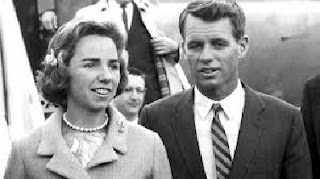Pennsylvania (/ˌpɛnsɪlˈveɪniə/ ⓘ PEN-sil-VAY-nee-ə, lit. 'Penn's forest'), officially the Commonwealth of Pennsylvania (Pennsylvania Dutch: Pennsylvanie), is a state spanning the Mid-Atlantic, Northeastern, Appalachian, and Great Lakes regions of the United States. Pennsylvania borders Delaware to its southeast, Maryland to its south, West Virginia to its southwest, Ohio and the Ohio River to its west, Lake Erie and New York to its north, the Delaware River and New Jersey to its east, and the Canadian province of Ontario to its northwest.
Pennsylvania is the fifth-most populous state in the United States, with over 13 million residents as of the 2020 United States census. The state is the 33rd-largest by area and has the ninth-highest population density among all states. The largest metropolitan statistical area (MSA) is the southeastern Delaware Valley, which includes and surrounds Philadelphia, the state's largest and nation's sixth-most populous city. The second-largest metropolitan area, Greater Pittsburgh, is centered in and around Pittsburgh, the state's second-largest city. The state's subsequent five most populous cities are Allentown, Reading, Erie, Scranton, and Bethlehem. The state capital is Harrisburg.
Pennsylvania's geography is highly diverse. The Appalachian Mountains run through the center of the state; the Allegheny and Pocono mountains span much of Northeastern Pennsylvania; close to 60% of the state is forested. While it has only 140 miles (225 km) of waterfront along Lake Erie and the Delaware River, Pennsylvania has the most navigable rivers of any state in the nation, including the Allegheny, Delaware, Genesee, Ohio, Schuylkill, Susquehanna, and others.
Pennsylvania was founded in 1681 through a royal land grant to William Penn, son of the state's namesake. Prior to that, between 1638 and 1655, a southeast portion of the state was part of New Sweden, a Swedish Empire colony. Established as a haven for religious and political tolerance, the colonial-era Province of Pennsylvania was known for its relatively peaceful relations with native tribes, innovative government system, and religious pluralism.
Pennsylvania played a vital and historic role in the American Revolution and the ultimately successful quest for independence from the British Empire, hosting the First and Second Continental Congress leading to the adoption of the Declaration of Independence. On December 12, 1787, Pennsylvania became the second state to ratify the U.S. Constitution. The bloodiest battle of the American Civil War, at Gettysburg over three days in July 1863, proved the war's turning point, leading to the Union's preservation. Throughout the late 19th and 20th centuries, the state's manufacturing-based economy contributed to the development of much of the nation's early infrastructure, including key bridges, skyscrapers, and military hardware used in U.S.-led victories in World War I, World War II, and the Cold War.
Since the state's 1787 founding, a number of influential Pennsylvanians have proven national and global leaders in their respective fields. Pennsylvania also has accumulated a lengthy list of firsts among U.S. states, including founding the nation's first library (1731), the first social club (1732), the first science organization (1743), the first Lutheran church (1748), the first hospital (1751), the first medical school (1765), the first daily newspaper (1784), the first arts institution (1805), the first theatre (1809), the first business school (1881), and other firsts among the nation's 50 states.
Pennsylvania was founded in 1681 through a royal land grant to William Penn, son of the state's namesake. Prior to that, between 1638 and 1655, a southeast portion of the state was part of New Sweden, a Swedish Empire colony. Established as a haven for religious and political tolerance, the colonial-era Province of Pennsylvania was known for its relatively peaceful relations with native tribes, innovative government system, and religious pluralism.
Pennsylvania played a vital and historic role in the American Revolution and the ultimately successful quest for independence from the British Empire, hosting the First and Second Continental Congress leading to the adoption of the Declaration of Independence. On December 12, 1787, Pennsylvania became the second state to ratify the U.S. Constitution. The bloodiest battle of the American Civil War, at Gettysburg over three days in July 1863, proved the war's turning point, leading to the Union's preservation. Throughout the late 19th and 20th centuries, the state's manufacturing-based economy contributed to the development of much of the nation's early infrastructure, including key bridges, skyscrapers, and military hardware used in U.S.-led victories in World War I, World War II, and the Cold War.
Independence Hall in Philadelphia, where the Declaration of Independence and United States Constitution were adopted in 1776 and 1787-88, respectively.
If you want to read a whole lot more, go here: https://en.wikipedia.org/wiki/Pennsylvania
- SERVES
- 4
- COOK TIME
- 45 Min
You won't need a passport for our Tuscan Chicken One Pot. The heavenly aroma and succulent taste will make you feel like you're sitting at sidewalk bistro in Tuscany. It's the marinara sauce and white wine that really takes this easy chicken dinner recipe to the next level. And one pot recipes are known for their easy clean up, so it really will seem like a vacation in your very own home!
- 1/2 cup all-purpose flour
- 1 teaspoon salt, divided
- 1/2 teaspoon black pepper, divided
- 1 (3- to 3-1/2-pound) chicken, cut into 8 pieces
- 1/4 cup olive oil
- 2 green bell peppers, thinly sliced
- 1 large onion, cut in half then thinly sliced
- 1/2 pound fresh sliced mushrooms
- 1 large tomato, chopped
- 2 to 3 sprigs fresh thyme, leaves removed from stems
- 1 (7.75-ounce) can garbanzo beans, drained
- 1 (24-ounce) jar spaghetti sauce
- 1/4 cup water
- 1/4 cup white wine (optional)
- 1/2 cup heavy cream
- In a shallow dish, combine flour, 1/2 teaspoon salt, and 1/4 teaspoon pepper; mix well. Dip chicken into flour mixture, coating evenly.
- In a Dutch oven or soup pot over medium-high heat, heat oil until hot. Add chicken and brown on all sides.
- Add remaining ingredients to chicken (including the remaining 1/2 teaspoon salt and 1/4 teaspoon pepper), except for the heavy cream; mix well. Reduce heat to low, cover, and cook 40 to 45 minutes, or until chicken is no longer pink in center.
- Remove chicken to a serving bowl. Stir heavy cream into the sauce and simmer for 2 to 3 minutes or until warm, but not boiling. Spoon sauce over chicken and serve.
- Go through your forever family member’s toys. Throw away any items that are no longer safe.
- Maintain your pet-friendly home. Keep cords and toxins secure from your four-legged friends. This includes phone chargers.
- Verify when vaccinations are due and schedule an appointment to update if they are due.
- Check collars to ensure tags are secure and numbers are current. We sometimes forget to update this information when we move or change numbers.














No comments:
Post a Comment